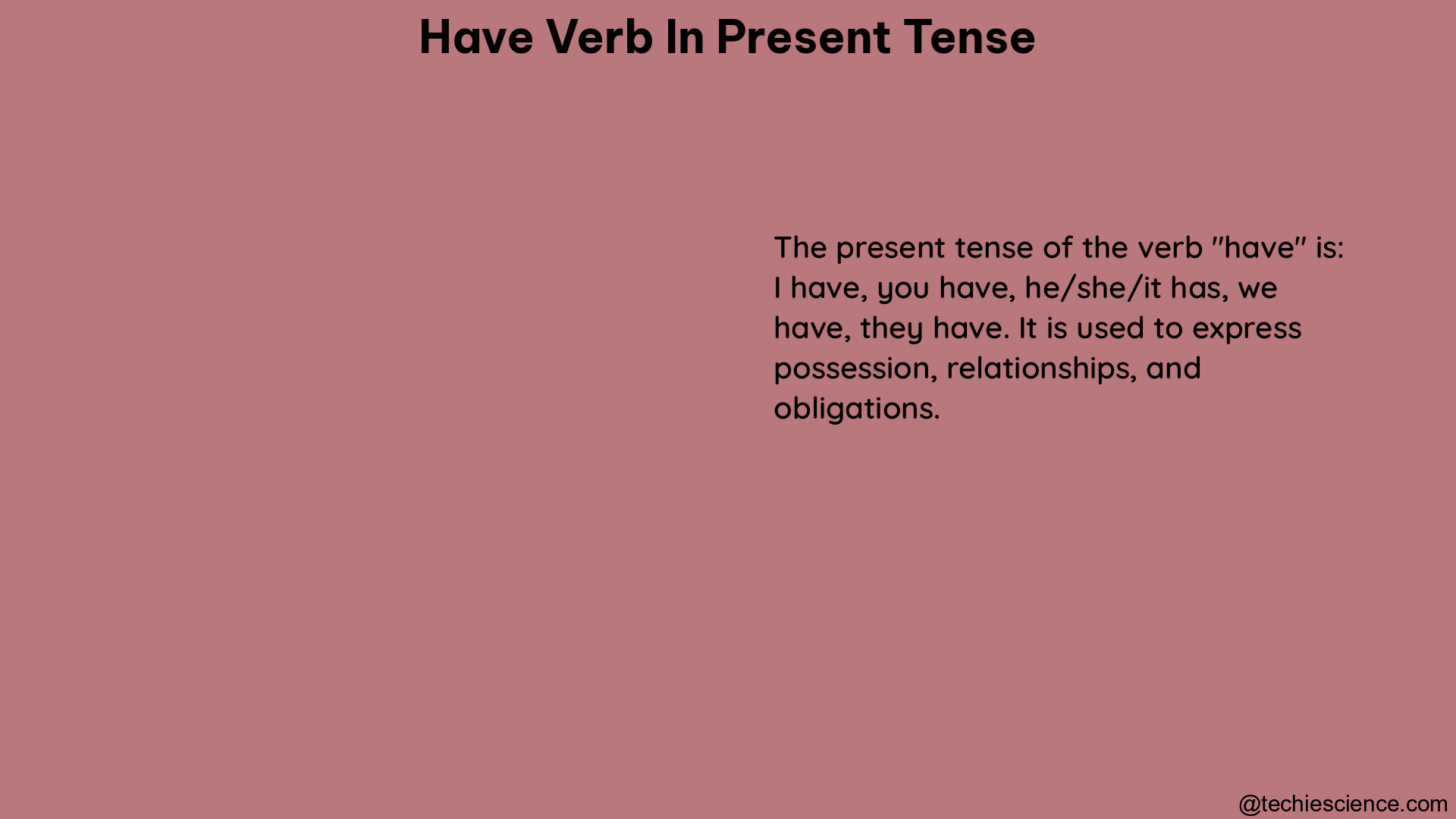The verb “have” is one of the most commonly used verbs in the English language, and understanding its usage in the present tense is crucial for effective communication. This comprehensive guide will delve into the various forms, functions, and nuances of the “have” verb in the present tense, providing you with a deep understanding of this essential grammatical concept.
Forms of “Have” in Present Tense
The present tense forms of the verb “have” are as follows:
- I have
- You have
- He/She/It has
- We have
- They have
These forms are used to express possession, experience, or a relationship in the present moment.
Examples of “Have” in Present Tense

Here are some examples of how the “have” verb is used in the present tense:
- I have a lot of work to do today.
- You have a beautiful garden.
- He has a keen interest in photography.
- She has a passion for cooking.
- They have a strong bond as a family.
Using “Have” as a Main Verb
The “have” verb can function as a main verb, indicating possession, experience, or a relationship:
- Possession: “I have three dogs and two cats.”
- Experience: “We have a wonderful time at the beach.”
- Relationship: “Do you have a pen I can borrow?”
In these examples, “have” is the main verb, carrying the meaning of the sentence.
Using “Have” as an Auxiliary Verb
The “have” verb can also be used as an auxiliary verb, helping to form various verb tenses:
- Present Perfect Tense: “I have completed my homework.”
- Past Perfect Tense: “Clarence had bet against the team.”
- Future Perfect Tense: “I will have finished the project by the end of the week.”
In these cases, “have” is used in conjunction with a past participle to create the perfect tenses.
Continuous Form of “Have”
The continuous form of the “have” verb is “having,” and it can be used as either a main verb or an auxiliary verb:
- Main Verb: “The children were having a playful competition.”
- Auxiliary Verb: “Having said that, the parents enjoyed themselves too.”
The continuous form of “have” emphasizes the ongoing nature of the action or state.
Negatives and Questions with “Have”
To form negative statements and questions with the “have” verb in the present tense, the following structures are used:
Negatives
- Present Tense – Negative: do / does + not + have
- Example: “I do not have time to attend the meeting.”
- Example: “She does not have a driver’s license.”
Questions
- Present Tense: Do I have…, Do you have…, Does he/she/it have…, Do we/you/they have…
- Example: “Do you have any plans for the weekend?”
- Example: “Does she have a favorite book?”
Important Notes
- The “have” verb can function as both a main verb and an auxiliary verb within the same sentence.
- The “have” verb is an irregular verb, with the forms “have,” “has,” “had,” and “having.”
Reference Links
By understanding the various forms, functions, and nuances of the “have” verb in the present tense, you can enhance your English language proficiency and communicate more effectively in a wide range of contexts.

Hi…. I am Goutam Datta. I have completed a double M. A. in English and B. Ed. I am a creative writer. Currently, I am a part of the LambdaGeeks.